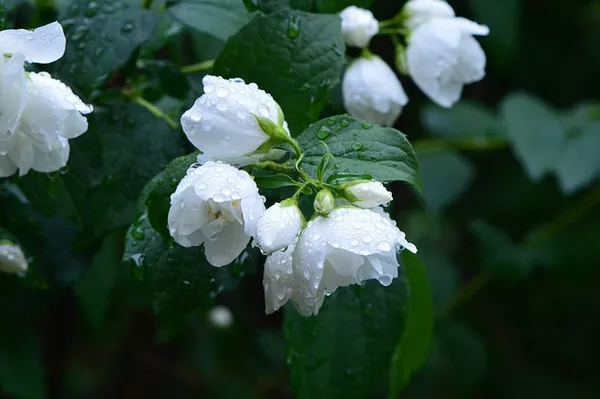Flowers, with their captivating beauty and diverse array of colors and fragrances, have been cherished by humanity for centuries. From ancient civilizations to modern times, flowers have held symbolic significance, adorned celebrations, and served as expressions of emotion. Amidst this rich tapestry of botanical wonder, individuals often develop distinct preferences for certain types of flowers. Understanding the nuances of these preferences can offer insights into personal tastes, cultural influences, and even psychological traits. In this article, we delve into the art of floral preference, exploring the factors that shape our affinity for particular blooms.
Cultural Influences
One of the primary determinants of floral preference is cultural background. Different cultures ascribe varying meanings and symbolism to flowers, influencing individuals’ perceptions and preferences. For example, in Japanese culture, the cherry blossom holds profound significance, symbolizing the transience of life and the beauty of nature. As a result, individuals with Japanese heritage may have a strong affinity for cherry blossoms, finding them deeply resonant and aesthetically pleasing.
Similarly, roses are universally recognized symbols of love and romance in many Western cultures. Individuals who grew up surrounded by this cultural narrative may develop a fondness for roses, associating them with sentiments of affection and passion. Conversely, in some Eastern cultures, lotus flowers are revered for their spiritual symbolism, representing purity and enlightenment. Those influenced by such cultural traditions may gravitate towards lotus blooms, appreciating their sacred significance.
Personal Associations and Experiences
Beyond cultural influences, personal associations and experiences play a significant role in shaping floral preferences. People often form emotional connections with certain flowers based on memorable experiences or significant events in their lives. For instance, someone who received a bouquet of lilies on their wedding day may develop a lifelong affinity for lilies, associating them with love, happiness, and marital bliss.
Likewise, individuals may develop preferences based on sensory experiences linked to specific flowers. The scent of jasmine, for example, evokes memories of summer evenings spent in a garden, surrounded by its intoxicating fragrance. These sensory associations can profoundly influence one’s floral preferences, creating a deep-seated attraction to certain blooms.
Aesthetic Appeal
The aesthetic qualities of flowers also play a crucial role in determining personal preferences. Each flower possesses unique characteristics in terms of color, shape, size, and texture, which may resonate differently with individuals based on their aesthetic sensibilities. Some may be drawn to the bold, vibrant hues of sunflowers, while others may prefer the delicate pastel shades of peonies.
Furthermore, individuals may have preferences for specific floral arrangements or styles. For example, some may appreciate the simplicity and elegance of a single stem rose, while others may favor lush, abundant bouquets bursting with diverse blooms. These aesthetic preferences reflect individuals’ tastes in art, design, and visual composition, influencing their choices in floral décor and arrangements.
Psychological Factors
Floral preferences can also be influenced by underlying psychological factors and personality traits. Research in the field of psychology suggests that certain personality traits may predispose individuals towards specific types of flowers. For instance, individuals with extroverted personalities may be drawn to bold, attention-grabbing flowers like tulips or dahlias, reflecting their outgoing and expressive nature.
Conversely, introverted individuals may gravitate towards more subtle, understated blooms such as daisies or lavender, reflecting their preference for tranquility and simplicity. Additionally, individuals experiencing stress or anxiety may find solace in the calming presence of flowers such as lavender or chamomile, which are known for their soothing properties.
Environmental Considerations
Environmental factors can also influence floral preferences, particularly in terms of availability and accessibility. Individuals living in regions with abundant floral diversity may have a wider range of options to choose from, allowing them to explore and develop preferences for various types of flowers. Conversely, those living in urban environments with limited access to green spaces may develop preferences based on the flowers they encounter in local markets or floral shops.
Furthermore, environmental consciousness and sustainability concerns may shape individuals’ floral preferences, leading them to favor locally grown, seasonal flowers or opt for eco-friendly floral arrangements. This growing awareness of environmental impact underscores the importance of considering ethical and sustainable practices in the floral industry.
Conclusion
Floral preference is a multifaceted phenomenon shaped by cultural influences, personal experiences, aesthetic sensibilities, psychological traits, and environmental considerations. Understanding the factors that contribute to individual preferences in flowers can offer valuable insights into human behavior, cultural dynamics, and societal trends.
Whether it’s the vibrant hues of a rose, the delicate fragrance of a lily, or the symbolic resonance of a lotus, each flower holds a unique appeal that resonates with individuals in different ways. By appreciating the art of floral preference, we can gain a deeper understanding of the complex interplay between nature, culture, and human emotion, enriching our appreciation for the beauty and diversity of the botanical world.


